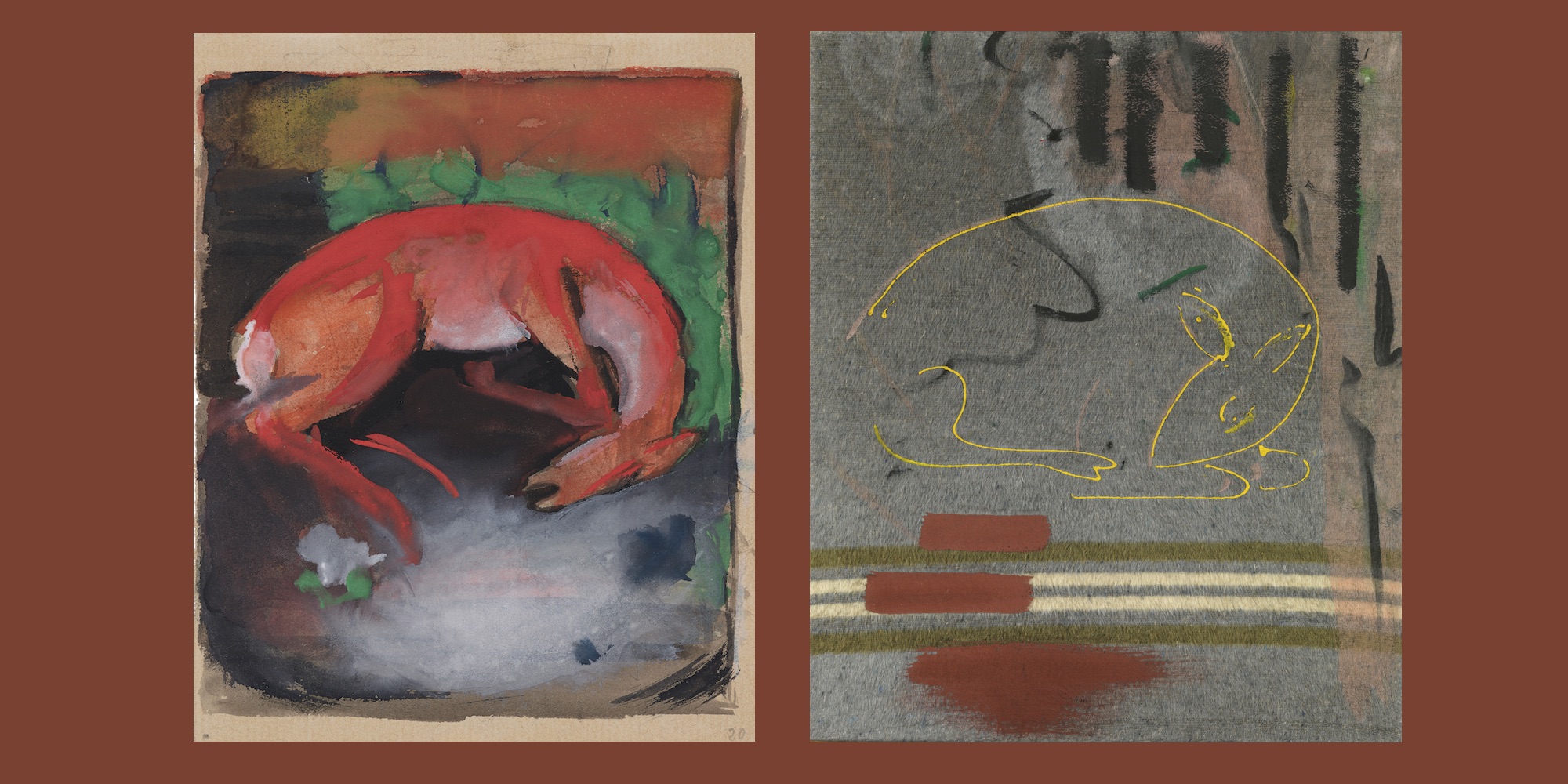

RED DEER
FRANZ MARC’S DEER
7 July 2024 – 15 September 2024
Among the animals that Franz Marc particularly liked to paint – horses, cats, donkeys and birds – the deer holds a special place. This motif, that can be found throughout his entire œuvre, also has a special symbolic meaning.
This symbolic quality is derived from medieval tales, romantic poetry and mythology as well as descriptions of nature that depict the deer as a particularly nimble and graceful animal, defenceless, shy and with large brown eyes. In stories, it is often lent human characteristics and is clearly associated with the feminine.
Franz Marc underlines these attributions in his drawings, watercolours and paintings. By separating colour from an object’s natural appearance, something that is fundamentally important to his work, the emotional quality of the deer is emphasised. Following his early depictions of the animal with a beige-brownish coat, Marc then painted deer in red or blue, colours which, in line with his thoughts on the symbolic meaning of colour, have opposing associations. While red stands for a connection with the earth, blue is the colour of spirituality, of overcoming worldly constraints. It is in this sense that the deer appears in one of Franz Marc’s most important late paintings: Tierschicksale (Animal Destinies). At the centre of an apocalyptic scene of a storm with fire and lightning, from which the forest animals are fleeing, a blue deer can be seen, stretching upwards in pain in the throes of death, symbolising its vanquish at the same time. It takes on the role of the victim.
The deer as a victim of human civilisation is a central thought in the work of Franz Marc who himself kept two pet deer when he lived in Sindelsdorf and later in Ried. It is also a topos that runs through the depiction of the animal in all epochs and media. From Gustave Flaubert and Georg Trakl to Walt Disney’s ‘Bambi’ (1942) the innocent deer is contrasted with the cruelty of humankind. Biological facts, however, are often ignored in the process. The male roe deer is not a stag, as often depicted in stories and pictures, but a roebuck, which does not have the same mythological or religious connotations as the (red deer) stag. Its connection with the legend of Saint Hubertus turns it into an admonisher to hunters, calling on them to hunt in moderation.
Based on Marc’s painting Red Deer, the exhibition shows that the significance of the deer and the stag as sacrificial animals remained latent even in the second half of the 20th century. This is particularly true of Joseph Beuys, for whom the stag was of great symbolic importance and frequently appears in the artist’s early drawings and watercolours. In the case of Sigmar Polke, however, who painted a deer stylistically reminiscent of Franz Marc’s on a woollen blanket that conjures up associations with school camps, youth movements and expulsion, it has less to do with the defencelessness of the animal than with his criticism of petty-bourgeois myths, with which the deer is also associated in Heimatfilme and romantic portrayals of the forest.
Li.: Franz Marc, Getötetes Reh, 1913
Aus Skizzenbuch XXVIII, S. 20, Franz Marc Museum. Stiftung Etta und Otto Stangl. Foto: collecto.art
Re.: Sigmar Polke, Reh, 1968, Bayerische Staatsgemäldesammlungen – Sammlung Moderne Kunst in der Pinakothek der Moderne München
© VG Bild-Kunst, Bonn, 2023/24. Foto: bpk | Bayerische Staatsgemäldesammlungen